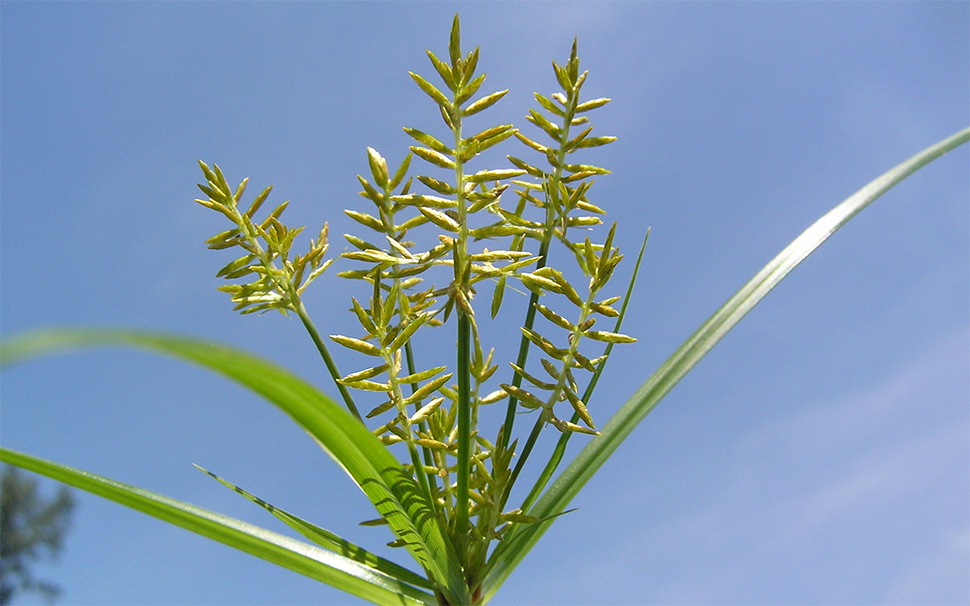General Information
Like true grasses (Poaceae), sedges (Cyperaceae) belong to monocotyledonous plants. The true grass family includes important cultivated plants such as wheat, barley, rye, oats and corn; but also important weeds such as slender meadow foxtail, couch grass, annual meadow grass or silky bent grass. Grass herbicides (graminicides) are available for effective control of these weeds. In contrast, sedges are more difficult to control and are increasingly becoming a problem in arable and horticultural fields. Sedges usually have a triangular stem; the leaves are arranged in three rows (at 120° angles). The individual flowers are inconspicuous. In Switzerland, sedges have come into focus due to the increasing spread of yellow nutsedge (Cyperus esculentus L.).
Yellow Nutsedge
Yellow nutsedge was first reported in Switzerland about 30 years ago. Since then, it has spread rapidly and has become a major problem. It reproduces vegetatively via tubers, which can easily be spread with soil, planting material, crop residues and machinery. For example, it is difficult to completely clean harvesters for sugar beets or potatoes, which is why tubers can spread unnoticed to uninfected areas. The problem is exacerbated by the use of machinery across farms.
In addition to yellow nutsedge, other sedges occur in Switzerland that can also cause problems:
Sea Club-Rush
Description: The sea club-rush (Bolboschoenus maritimus (L.) Palla) is a perennial plant with a sharp triangular stem and glossy, dark green leaves. The plant is not hairy and forms rhizomes and tubers in the soil. Compared to yellow nutsedge, sea club-rush is massive (thicker shoots, larger tubers) and is darker in colour.
Occurrence: In our latitudes, the sea club-rush is naturally present along bodies of water. However, populations in its natural habitat have been declining and since the 80’s, the plant (increasingly) occurs on fields (Hilbig, 1994). In Switzerland, it is endangered in natural habitats and it is protected in the canton of Geneva.
Agricultural importance: If tubers are introduced into a field, they are dispersed by tillage and proliferation can occur. Early detection of such problematic plants is extremely important. Infested areas are described as moist, nutrient rich, basic to slightly acidic loam and clay soils with high groundwater levels.
Control in vegetable and arable fields: Contact the cantonal technical office. If the area of infestation is small, do not continue cultivation in the area to prevent further spreading. Newly germinating plants can be removed and disposed of as household waste. Machines must be thoroughly cleaned.







